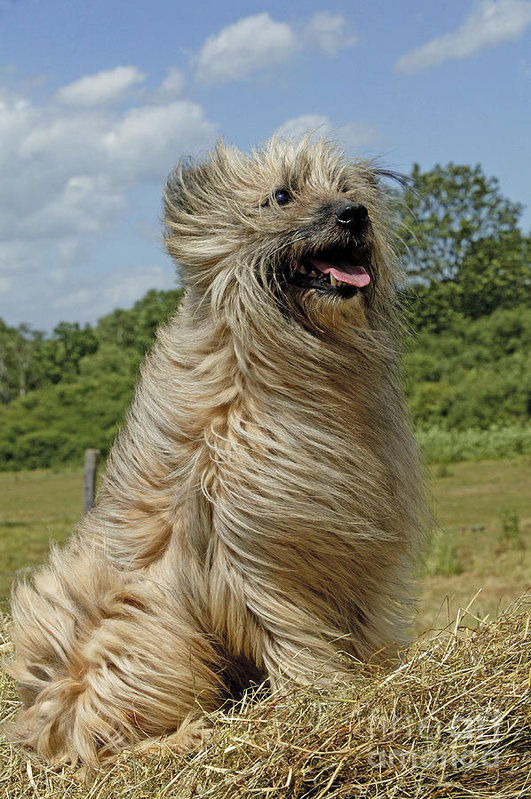
Smooth faced Pyrenean Shepherds have always existed in the Pyrenees Mountains, but since the 1920s, the breed has been acknowledged as having two coat varieties, the Smooth-Faced and Rough-Faced (which includes both demi-long and the long-haired types). “Museau Face-Rase” is the term used in France for the smooth-faced variety, while the rough faced version is also known as the Museau Normal, or literally, “normal snout.” In France, however, it is now referred to as the Museau Poil Long or in America as the Rough-Faced variety. Why this is interesting is because the hair on the dog’s muzzle is what defines the dog’s breed variety.
The furnishings locus determines the muzzle hair. Dogs that are homozygous for furnishings (which is to say that they have two identical alleles of a particular gene) will have the typical muzzle hair for a longhaired Pyrenean Sheepdog. Dogs that are homozygous for the non-furnishings allele don’t have any long facial hair at all, and they are defined as smooth faced Pyrenean Sheepdogs. Dogs that are heterozygous for the furnishings allele (they have different alleles of a particular gene) can look like either like smooth faced dogs with some longer hair on the muzzle, or like long-haired dogs with shorter muzzle hair than usual.
Both are born in the same litters!
Before we forget, we’ve read that there’s a variant that causes curly coats in Pyrenean Sheepdogs, but it occurs very rarely. We know so little about it that we invite Pyr Shep folks to share what they know!
And finally, we don’t want to pass up the opportunity to suggest you watch the video in this link. That this is a brave little breed doesn’t quite describe the topography in which the videoed dog works.
Image: Pyrenean Sheepdog by Jean-Michel Labat is available as fine art, and as items in home decor or lifestyle accessories here
